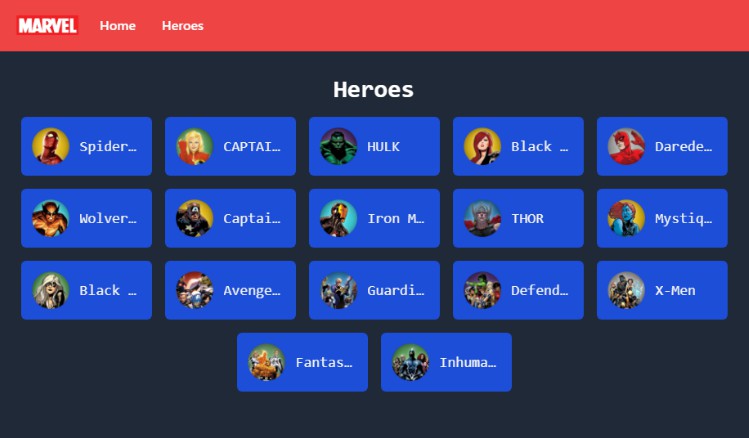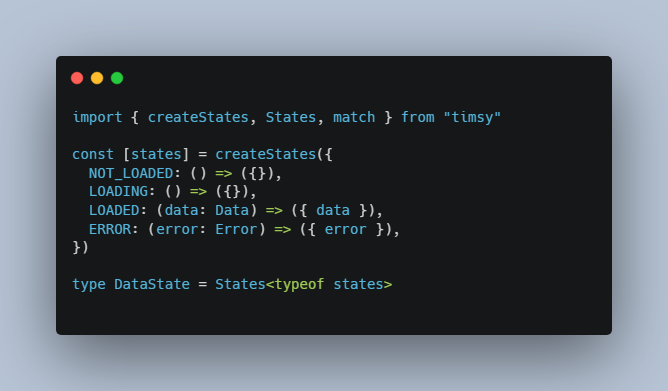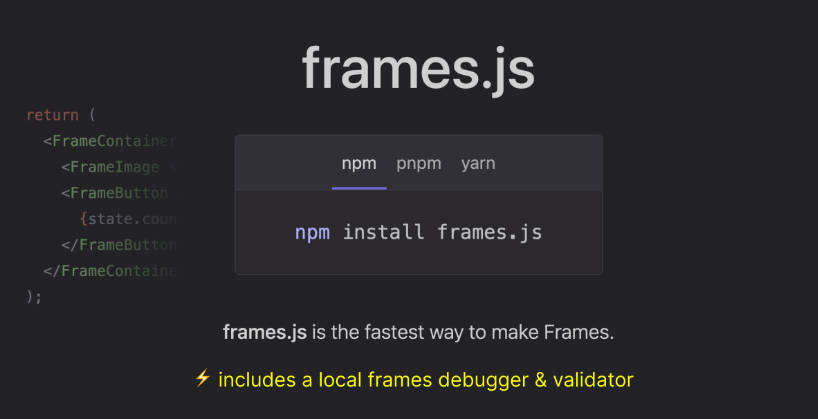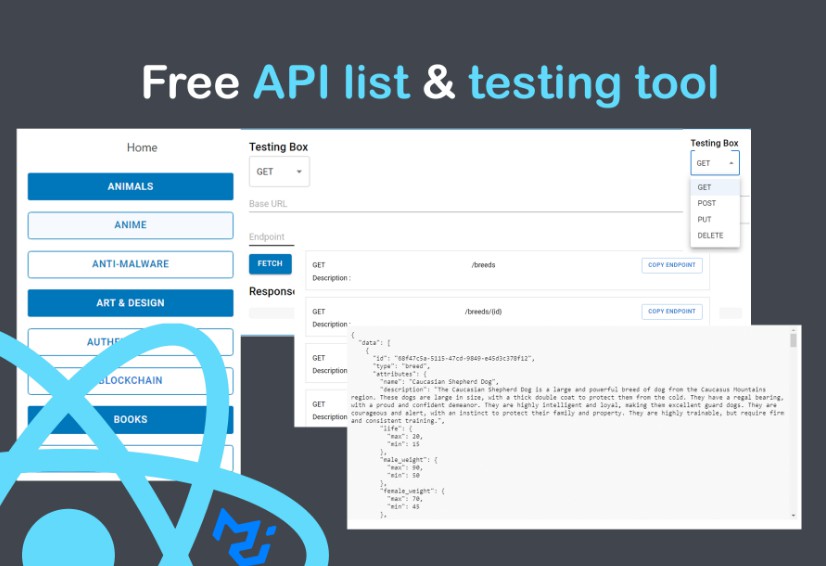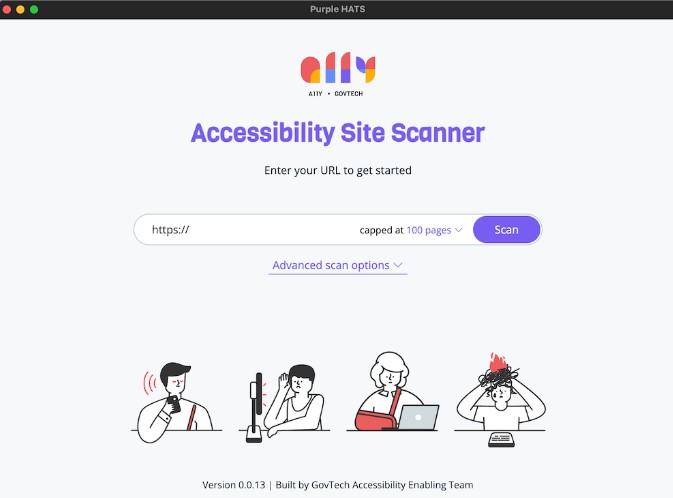ERC-20-tutorial
A quick ERC-20 tutorial with testing, fuzzing and more.
Our Approach
This tutorial will help you learn web3 with three principles in mind:
- Learning by doing
- Starting with blockchain first
- Providing the big picture context for additional learning
By focusing on project-based learning, you will have the proper context to understand new technical concepts. For motivation, it’s also good to have an end goal in mind and goal posts along the journey.
As you will see, web3 is an emergent technology, like a skills tree in an RPG game. Innovations and standards in one area unlock the door for new tech built upon it. For example, the ERC-20 standard allows for Decentralized Finance (DeFi) to be possible. The concepts introduced here will expand into other applications.
Concepts and Tech Covered
Concepts
We will be covering the following concepts:
- Developing an ERC-20 smart contract
- Understanding what are smart contract standards
- Understanding the smart contract development life cycle
- Creating scripts to automate your work
- Testing, fuzzing and security best practices in context of this project
Tech
We’ll be using the following tools:
- Solidity
- Truffle Suite
- OpenZeppelin
- Infura
- React
- JavaScript
- Web3JS
Prerequsites
To complete this module, it is assumed that you know at least the basics of:
- Programming
- JavaScript
- React
- NodeJS
- Command-line terminal
For those new to programming, check out ConsenSys Academy’s Basic Training, a free course to guide new developers. You can also join our TBD – Truffle Unleashed Discord Channel to chat with other current and aspiring devs on your journey.
You can also message @tesla809 on Twitter if you have a programming question.
Note on Solidity
Solidity is a programming scripting language to create smart contracts on Ethereum Virtual Machine (EVM) based blockchains. Ethereum was the first programmable blockchain that allows any arbitrary logic. Bitcoin has scripting capabilities, but it is severely limited.
Familiarity with Solidity is not required but is nice to have. Along the way, we will describe the basics to complete the module. Via hands-on experience, you will be able to pick up the language. If you are stuck, there are resources online to help, like the official Solidity documentation and solidity-by-example.org.
Later, we plan to create stand-alone bite-sized Solidity examples, similar to Rust by Example.
If you would like a basic overview of the Ethereum Stack checkout this article. Additionally, you can explore the architecture of a web3 application.
Background Overview
What is a Token
First, let’s understand what a token is. Conceptually, a token is a representation of some asset in the blockchain. Since blockchains are great for modeling economic scarcity by determining who owns what, this asset would most likely be scarce and owned by some entity.
Tokens can represent anything, like time, money, services, virtual pets, stock, bonds, video game points, characters, items, reputation points, ounces of gold, and much more.
Token Contracts
Under the hood, a token is just a smart contract. In fact, most things built on Ethereum are smart contracts, which are programmable snippets of code that run on the Ethereum blockchain.
Contracts
Contracts work just like classes in other programming languages. According to the official Solidity documentation, a contract is “a collection of code (its functions) and data (its state) that resides at a specific address on the Ethereum blockchain.”
Token Methods
Token contracts define the actions which a token can perform. Actions like “sending tokens” and “destroying tokens” are just really programmed functions in the contract.
Token State
Token contracts also hold “state,” which is data associated with the token, like the balance of all token holders. Within the contract, there is a key-value data structure called a “mapping,” which holds the balances of each address. This “ledger” is what determines who owns what.
Example: Moving Tokens
When a token moves from one address to another, the token doesn’t move from one wallet to another. Instead, it’s similar to a database update or a spreadsheet, where one account’s funds are reduced, and another is increased.
Custom logic
Since token contracts are programs, you can create any sort of logic based on this move. In theory, you can create a token that gives 2x the amount you sent to the recipient. You are only limited by your imagination.
What is an ERC-20 Token
Fungible Goods
An ERC20 token is used to represent fungible goods. Fungible goods are equivalent and interchangeable. Therefore, each token is exactly the same, with no token having any special behavior attached to it.
Examples of fungible goods are Ether, fiat currencies like the US Dollar or Euro, and voting rights. ERC-20 tokens are useful for assets like currencies, voting rights, points in a game, and more. In general, with fungible assets, you care about how much of it you have.
ERC-20 Standard
What are token standards
Simply put, a token standard is a common API for tokens within smart contracts.
Token standards allow developers to predict how to interact with other tokens. Since smart contracts can be programmed in any way, standards need to be created so that tokens interoperate with each other and other contracts. Without standards, there would be as many implementations as there are tokens. Building any composable application that leverages other smart contracts would be difficult and time-consuming.
Token standards have a minimum required common set of methods and events. Their naming must be the same as the standard. However, their implementation or underlying logic is open to the developer. Once this minimum set of methods and events have been satisfied, the token can have additional methods and interfaces for added functionality.
Events are used to issue alerts regarding actions that occured on the blockchain. Events can be used to trigger UI updates on app front ends, testing, logging and more.
ERC-20 Standard Overview
The ERC-20 standard defines a common list of rules that all fungible Ethereum tokens should adhere to. Without adherance, developers will find it hard for others to use their token, reducing its utility and possible network effects.
The purpose of the ERC-20 standard is to make any token implementation interoperable, reusable and composable across any application, like wallets, decentralized exchanges, lending markets and beyond. It provides the basic functionality to transfer tokens and allow tokens to be approved, so they can be spent by another on-chain third party. This common standard creates the building blocks for Decentralized Finance (DeFi).
The Minumum ERC-20 API
Below are all the required methods and events needed to implement the ERC-20 standard. Again, the ERC-20 standard is just a common API for fungible assets.
Let’s go through each part of this code and cover:
- SPDX-License-Identifier
- NatSpec
- pragma
- interfaces
- events
- functions
Later, when we implement our first pass at the contract, we will cover the basics of Solidity’s language primitives. This may be counter intuitive at first, but starting with the standard allows us to take a big picture hands-on view.
Below is OpenZeppelin’s implementation of the minimum required API for the ERC-20 Standard.
// SPDX-License-Identifier: MIT
// OpenZeppelin Contracts (last updated v4.6.0) (token/ERC20/IERC20.sol)
pragma solidity ^0.8.0;
/**
* @dev Interface of the ERC20 standard as defined in the EIP.
*/
interface IERC20 {
/**
* @dev Emitted when `value` tokens are moved from one account (`from`) to
* another (`to`).
*
* Note that `value` may be zero.
*/
event Transfer(address indexed from, address indexed to, uint256 value);
/**
* @dev Emitted when the allowance of a `spender` for an `owner` is set by
* a call to {approve}. `value` is the new allowance.
*/
event Approval(address indexed owner, address indexed spender, uint256 value);
/**
* @dev Returns the amount of tokens in existence.
*/
function totalSupply() external view returns (uint256);
/**
* @dev Returns the amount of tokens owned by `account`.
*/
function balanceOf(address account) external view returns (uint256);
/**
* @dev Moves `amount` tokens from the caller's account to `to`.
*
* Returns a boolean value indicating whether the operation succeeded.
*
* Emits a {Transfer} event.
*/
function transfer(address to, uint256 amount) external returns (bool);
/**
* @dev Returns the remaining number of tokens that `spender` will be
* allowed to spend on behalf of `owner` through {transferFrom}. This is
* zero by default.
*
* This value changes when {approve} or {transferFrom} are called.
*/
function allowance(address owner, address spender) external view returns (uint256);
/**
* @dev Sets `amount` as the allowance of `spender` over the caller's tokens.
*
* Returns a boolean value indicating whether the operation succeeded.
*
* IMPORTANT: Beware that changing an allowance with this method brings the risk
* that someone may use both the old and the new allowance by unfortunate
* transaction ordering. One possible solution to mitigate this race
* condition is to first reduce the spender's allowance to 0 and set the
* desired value afterwards:
* https://github.com/ethereum/EIPs/issues/20#issuecomment-263524729
*
* Emits an {Approval} event.
*/
function approve(address spender, uint256 amount) external returns (bool);
/**
* @dev Moves `amount` tokens from `from` to `to` using the
* allowance mechanism. `amount` is then deducted from the caller's
* allowance.
*
* Returns a boolean value indicating whether the operation succeeded.
*
* Emits a {Transfer} event.
*/
function transferFrom(
address from,
address to,
uint256 amount
) external returns (bool);
}
Comments
Programming languages have the abilty to allow developers to leave comments. Solidity follows the JavaScript (ECMAScript) style of making comments with:
//single line comments/* */multi line comments
SPDX
Solidity files should have a license identifier. Software licenses are essential because, depending on the type, they can provide different limitations, liability protection, or requirements for usage. Usually, smart contracts use the MIT License, which limits personal liability while giving users expansive freedoms.
If you need a different license, explain it in the comments. In addition, you can find a developer’s guide to licenses here and, for the more curious, the entire list of SPDX licenses here. Reasons for choosing a different license range from business considerations to wishing to retain all derivative code as open-source even if a business builds on top of it.
SPDX is an open standard for communicating software licenses, copywrites, security references, etc.
OpenZeppelin Reference
OpenZeppelin provides security products to build, automate, and operate decentralized applications. OpenZeppelin’s Solidity smart contracts are a library of modular, reusable, secure smart contracts for EVM-based networks. Used by the Ethereum Foundation and the world’s top protocols, they are the industry standard and provide a secure base for developing your smart contracts.
Later, we’ll see how we import their contracts to provide a secure base for our smart contracts.
NatSpec
The multiline comments with symbols like @dev are part of Solidity’s NatSpec format. NatSpec is used to produce documentation from the source code. JavaScript Developers may recognize its similarity to JSDoc. Using NatSpec to document your code is considered a security best practice.
NatSpec is useful for developers, 3rd party tooling, and end-users. For developers, it helps them and the future you understand your code. Custom annotations used by 3rd party tools can be added. NatSpec messages may even be shown to the end-user at the time that they will interact with the contract, like signing a transaction.
There are other symbols like:
-
@title – A title that should describe the contract/interface
-
@author – The name of the author
-
@notice – Explain to an end user what this does
-
@dev – Explain to a developer any extra details
-
@param – Documents a parameter just like in Doxygen (must be followed by parameter name)
-
@return – Documents the return variables of a contract’s function
-
@custom: – Custom tag, semantics is application-defined
Pragma
pragma solidity >=0.6.0 <0.8.0;
Since what is executed on the Ethereum Virtual Machine (EVM) is EVM bytecode, any language that compiles into it can be used to write smart contracts. Another popular language is Vyper, a Python-inspired smart contract scripting language for the EVM. Check this quick breakdown of both if you are curious. Hence, because of various languages, in our pragma, we specify the language.
Like all programming languages, Solidity has updates. The pragma states which version of the Solidity is being used. The pragma determines which compiler to use to compile the code to EVM Bytecode. This is important because Solidity becomes safer and easier to use as the language evolves. The version of the language is indicated by the Semantic versioning (SemVer). Depending on what symbol you pass in, you can indicate which compiler version to use. See this simple SemVer cheat sheet.
>=0.6.0 <0.8.0; indicates to use the compiler greater than 0.6.0 and less than 0.8.0. Specifying the minimum and maximum range of a language with which you tested the code is a good practice.
Interface Overview
Think of interfaces like a light switch. Light switches can come in different styles and operate in different ways. However, your only concern is that the lights can be turned on or off. You can think of the light switch as an interface or API for an action, toggling between lights on or off.
In Object-Oriented Programming, interfaces are popular patterns as well. They split a piece of code’s expected functionality from its implementation. Or simply put, interfaces separate the definition of a function from the actual behavior of the said function. As a result, they can help create the APIs that form our token standards.
In Solidity specifically, an Interface is a smart contract that lists a series of functions and events without implementation. Interface contracts do not focus on HOW a contract can do something, only WHAT they can do. Think of smart contract interfaces as a skeleton or backbone. It defines the contract’s functionalities and how to trigger them. But not HOW it occurs. HOW the function is implemented is customizable and up to the developer.
The main idea behind interfaces is to provide a re-usable and customizable approach for creating smart contracts. Interface contracts give the structure to create a token standard that serves as the API surface for your contracts.
Just like an API, a smart contract based on a specific interface makes it easy to understand:
- the contract’s functionality
- how to interact with the contract.
This allows developers and other contracts a predictable way to interact with any smart contract implementing a specific interface.
By convension, Interface contracts are in named in the form ITokenStandard, with I and appended by the standard. The ERC-20 standard is thus: interface IERC20 {...}. Convention means that it’s the HIGHLY suggested manner to do something. However, it is not enforced by the language’s compiler.
How are interfaces implemented? Like other programming languages, the implementation class (contract) will inherit from the interface class (contract). However, stay tuned.
Events
As mentioned before, Events are used to issue alerts regarding actions that occurred on the blockchain. Apps can subscribe to events to update their UI. Events can also be used for logging purposes. Event “emits” a message when an action on a function occurs.
Event parameters can be indexed, with a maximum of 3 named parameter or 4 anonymous parameters. Indexing allow for
A note on syntax. Don’t get hung up on understanding each part immediately. We will get into the specifics later. For now, just understand the big picture and gist of the code.
Transfer
/**
* @dev Emitted when `value` tokens are moved from one account (`from`) to
* another (`to`).
*
* Note that `value` may be zero.
*/
event Transfer(address indexed from, address indexed to, uint256 value);
The Transfer event is emitted when the amount of tokens, value, is sent from the from address to the to address.
Approval
/**
* @dev Emitted when the allowance of a `spender` for an `owner` is set by
* a call to {approve}. `value` is the new allowance.
*/
event Approval(address indexed owner, address indexed spender, uint256 value);
This event is emitted when the amount of tokens (value) is approved by the owner to be used by the spender.
Getter Functions
Getters are functions that only read and return data from the smart contract on the Ethereum network. They DO NOT modify the state of the contract, i.e. updating or deleting information.
totalSupply
/**
* @dev Returns the amount of tokens in existence.
*/
function totalSupply() external view returns (uint256);
totalSupply returns the amount of tokens in existence.
Again, this function is a getter and does not modify the state of the contract.
Interestingly, Solidity does not have floats. float or floating-point numbers represent decimal numbers in other languages. This is similar to how int represents integers or string represents words. These are considered language ‘primitives’, building blocks of the language.
So, how do we represent a fraction of a unit of value? An example is 0.5 US dollars (50 cents) or 0.5 ETH?
Let’s describe briefly, then go in-depth later during our custom ERC-20 contract implementation.
We see local currencies adopt two decimal subdivisions in everyday life, i.e., $USD 1.50. In Ethereum, most tokens are even more subdivisible, and most adopt 18 decimals. As a result, most will return the totalSupply as 1000000000000000000 for 1 token. However, this is not universal, and you should check when dealing with 3rd party tokens.
balanceOf
/**
* @dev Returns the amount of tokens owned by `account`.
*/
function balanceOf(address account) external view returns (uint256);
Returns the amount of tokens owned by an address (account). This function is a getter and does not modify the state of the contract.
allowance
/**
* @dev Returns the remaining number of tokens that `spender` will be
* allowed to spend on behalf of `owner` through {transferFrom}. This is
* zero by default.
*
* This value changes when {approve} or {transferFrom} are called.
*/
function allowance(address owner, address spender) external view returns (uint256);
The ERC-20 standard allows an address to give an allowance to another address to be able to retrieve tokens from it. This getter returns the remaining number of tokens that the spender will be allowed to spend on behalf of owner. This function is a getter and does not modify the state of the contract and should return 0 by default.
Functions
These functions update the state of the contract.
transfer
/**
* @dev Moves `amount` tokens from the caller's account to `to`.
*
* Returns a boolean value indicating whether the operation succeeded.
*
* Emits a {Transfer} event.
*/
function transfer(address to, uint256 amount) external returns (bool);
Moves the amount of tokens from the function caller address (msg.sender) to the recipient address. This function emits the Transfer event defined later. It returns true if the transfer was possible.
approve
/**
* @dev Sets `amount` as the allowance of `spender` over the caller's tokens.
*
* Returns a boolean value indicating whether the operation succeeded.
*
* IMPORTANT: Beware that changing an allowance with this method brings the risk
* that someone may use both the old and the new allowance by unfortunate
* transaction ordering. One possible solution to mitigate this race
* condition is to first reduce the spender's allowance to 0 and set the
* desired value afterwards:
* https://github.com/ethereum/EIPs/issues/20#issuecomment-263524729
*
* Emits an {Approval} event.
*/
function approve(address spender, uint256 amount) external returns (bool);
Set the amount of allowance the spender is allowed to transfer from the function caller (msg.sender) balance. This function emits the Approval event. The function returns whether the allowance was successfully set.
transferFrom
/**
* @dev Moves `amount` tokens from `from` to `to` using the
* allowance mechanism. `amount` is then deducted from the caller's
* allowance.
*
* Returns a boolean value indicating whether the operation succeeded.
*
* Emits a {Transfer} event.
*/
function transferFrom(
address from,
address to,
uint256 amount
) external returns (bool);
Moves the amount of tokens from sender to recipient using the allowance mechanism. amount is then deducted from the caller’s allowance. This function emits the Transfer event.
Optional ERC-20 Methods
If you notice the ERC-20 standard has optional methods.
Let’s cover these and provide some context.
Please note that these following OPTIONAL methods can be used to improve usability, BUT interfaces and other contracts MUST NOT expect these values to be present.
name
function name() public view returns (string)
symbol
function symbol() public view returns (string)
decimals
function decimals() public view returns (uint8)
Setup
Via Github
You can fork and clone this repo
Fork repo then run
git clone YOUR-GITHUB-URL
Manual Setup
Or you can set up the repo from scratch. Knowing how to do this is helpful if you are creating an independent project in the future.
Create the repository
mkdir erc-20-tutorial
Set up Truffle Suite. Truffle is a suite of tools and a community to help you get to professional-grade development.
truffle init
Setup package.json. Use the -y flag to skip over setup config questions.
This will automatically answer yes to all questions which may have security implications. For our purposes, this will not matter.
yarn init -y
Set up the front end
npx create-react-app client
Basic ERC-20
For context, here is an overview of an anatomy of a smart sontract.
ERC-20 Extensions
Minting and Burning Overview
When minting new tokens, the transfer is usually from the 0x00..0000 address. When burning tokens the transfer is to 0x00..0000.

